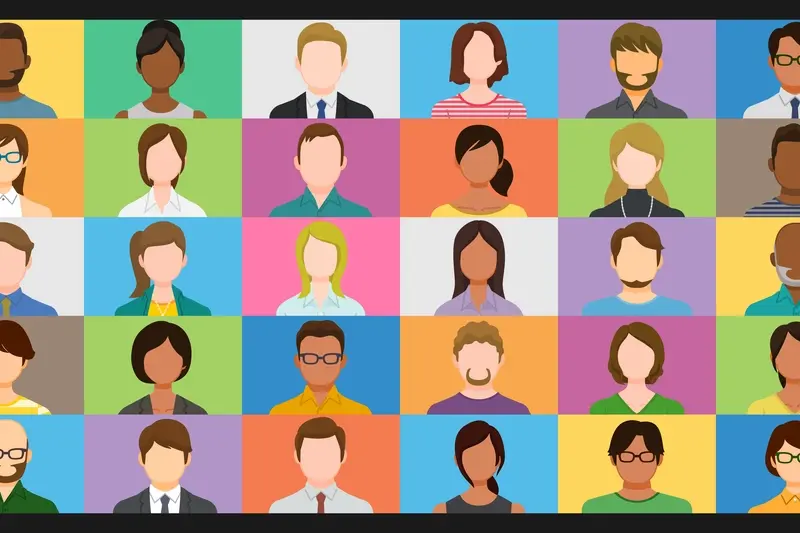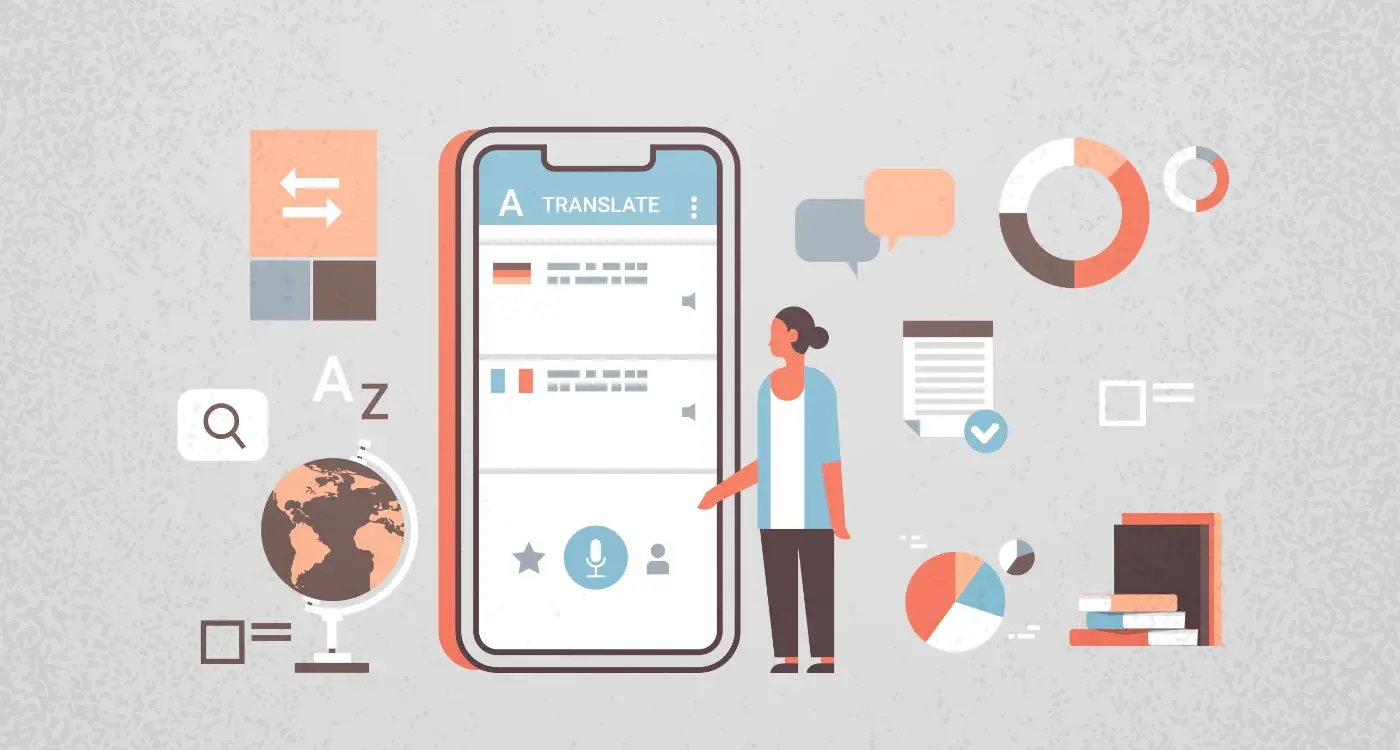Who Might Use My Mobile App?
Developing a mobile app is an exciting journey, but one question often keeps app creators awake at night: Who will actually use my app? It's a bit like hosting a party - you want to make sure the right people show up and have a brilliant time.
Having guided hundreds of businesses through their app development journey over the past eight years, we've learned that understanding your potential users isn't just helpful - it's absolutely essential. Think about some of your favourite apps for a moment. Whether it's WhatsApp, Deliveroo, or Spotify, they all share one thing in common: they know exactly who they're building for.
The most successful apps aren't just built with good code - they're built with a deep understanding of the humans who'll tap, swipe, and click through them every day.
What You'll Learn in This Guide
Throughout this guide, we'll help you navigate the fascinating world of app users. We'll explore different age groups, personality types, and behaviours that could influence who might love your app. You'll discover practical tips for market research, learn how to create detailed user personas, and peek into future trends that might affect your user base.
Whether you're building a fitness tracker, a dating app, or the next big social platform, understanding your potential users will help you make informed decisions about features, design, and marketing. It's rather like being a detective - gathering clues about your users to create something they'll truly value.
So, grab a cuppa, get comfortable, and let's embark on this journey together to discover who might become your app's biggest fans.
Understanding Your Target Audience
When you're dreaming up your mobile app, it's tempting to say "everyone will love this!" We've seen this enthusiasm countless times in our eight years of app development, and while it's brilliant to be passionate, the reality is that trying to appeal to everyone often means appealing to no one.
Why Target Audience Matters
Think about your favourite jumper - it fits you perfectly because it was made with someone like you in mind. Mobile apps work the same way. When you understand exactly who you're building for, you can create an experience that feels like it was tailored just for them, much like that perfect-fitting jumper.
Your target audience isn't just a vague group of potential users; they're real people with specific needs, habits, and preferences. Remember when Pokémon GO launched? It wasn't trying to attract everyone - it specifically targeted gaming enthusiasts and Pokémon fans, but ended up having broader appeal because it understood its core audience so well.
- They influence your app's design and user interface
- They determine your app's features and functionality
- They shape your marketing strategy and messaging
- They guide your pricing decisions
- They affect your choice of platform (iOS, Android, or both)
Before diving into the specifics of who might use your app, it's crucial to understand that your target audience will be the foundation of every decision you make. In the following chapters, we'll help you identify exactly who these wonderful people might be, and how to create an app they'll absolutely love.
Age Groups and Demographics
When creating a mobile app, it's fascinating to see how different age groups interact with technology in their own unique ways. Let's explore the main age groups and what they typically look for in mobile apps.
Key Age Groups and Their Behaviours
Generation Z (ages 10-25) are our digital natives. They've grown up with smartphones and expect instant satisfaction. They love short-form content, social features, and apps that let them express their creativity - think TikTok or Snapchat.
Millennials (ages 26-41) are tech-savvy and value-driven. They're likely to use apps for everything from meditation to mortgage calculations. They appreciate apps that save time and make life easier, like food delivery or budget tracking tools.
Generation X (ages 42-57) tend to be practical app users. They're interested in news, weather, and utility apps that serve a clear purpose. They're also more likely to make in-app purchases than younger generations.
Baby Boomers (ages 58-76) are increasingly embracing mobile technology. They prefer apps with clear navigation, larger text options, and straightforward functionality. Health tracking and communication apps are particularly popular with this group.
Beyond Age: Other Demographics
Remember that age isn't everything. Income levels, location, education, and occupation all play crucial roles in how people use apps. For instance, a busy parent in London might need different features from a student in Manchester, regardless of their age.
When designing for different age groups, avoid stereotypes. For example, while many assume older users struggle with technology, our research shows that 68% of users over 65 are confident with apps they use regularly.
Different User Personalities
When we think about who might use our mobile apps, it's fascinating to consider how different personality types interact with technology. Just like how some of us love a quiet cuppa while reading, and others prefer a buzzing coffee shop, users approach apps in uniquely personal ways.
The Core Personality Types
Through our years of app development, we've noticed several distinct personality types. There are the 'Explorers' who love clicking every button and discovering features on their own - think of them as the digital equivalent of people who never read instruction manuals! Then we have the 'Cautious Users' who prefer step-by-step guidance, similar to those who carefully read reviews before trying a new restaurant.
How Personalities Affect App Usage
We've observed that 'Social Butterflies' tend to gravitate towards sharing features and community aspects, while 'Task-Focused' users appreciate streamlined, efficient experiences with minimal distractions. Some users, whom we playfully call 'Power Users', will dig into every advanced setting, whilst 'Casual Users' might only touch the surface of an app's capabilities.
Understanding these different personalities isn't about putting users in boxes - it's about ensuring your app can adapt to various preferences. Think of it like a good host at a party who makes sure everyone feels comfortable, whether they're the life and soul or prefer quiet corners. By considering these diverse personality types during development, you can create an app that feels welcoming and intuitive to everyone, regardless of how they naturally interact with technology.
Common User Behaviours
Understanding how people actually use mobile apps in their daily lives is fascinating - and sometimes surprising! Through our years of experience at Glance, we've observed that users often develop particular patterns and habits when interacting with apps, much like how we all have our morning routines.
The true measure of an app's success isn't in its features, but in how seamlessly it fits into users' daily behaviours and habits
The Five Core Behaviour Patterns
We've noticed that most users fall into predictable behaviour patterns. Some are 'quick checkers' who glance at their apps briefly but frequently throughout the day - think weather apps or social media. Others are 'deep divers' who use apps for extended periods, like gaming or reading apps. Then there are 'routine users' who access apps at specific times, such as fitness apps during morning workouts.
Context Matters
Where and when people use your app significantly impacts their behaviour. For instance, commuters might use apps differently than office workers, and weekend usage patterns often differ from weekday ones. We've seen shopping apps used more during lunch breaks, while entertainment apps peak in the evening.
It's rather like how we might pop to the corner shop for milk (quick checker), spend hours browsing at a shopping centre (deep diver), or visit our favourite café every Saturday morning (routine user). Understanding these natural rhythms helps ensure your app fits smoothly into users' lives rather than disrupting them. Remember, the goal isn't to change user behaviour, but to complement it.
Market Research Tips
Getting to know your potential app users isn't as daunting as it might seem. After working with hundreds of app creators over the years, we've found that good market research often feels like having a friendly chat with your future users - just more structured!
Think of market research as being a bit like planning a dinner party. You wouldn't serve spicy curry to guests who can't handle heat, would you? Similarly, understanding your app users helps you serve up exactly what they're craving.
Essential Research Methods That Actually Work
- Survey your target audience through social media platforms they already use
- Join relevant online communities and observe natural conversations
- Study your competitors' app reviews (they're a goldmine of user insights!)
- Use tools like Google Trends to spot what's popular in your app's category
- Create quick polls in Facebook groups or LinkedIn to gather quick feedback
Remember that time when everyone thought QR codes were dead, only for them to become essential during the pandemic? That's why we always encourage looking beyond current trends. Sometimes, the most valuable insights come from unexpected places.
Making Sense of Your Findings
Don't get overwhelmed by all the data you collect. Focus on patterns that keep popping up. If you notice that potential users frequently mention wanting to use your app during their commute, that's a strong signal to optimise for quick, on-the-go interactions.
Above all, keep things simple and genuine. The best market research doesn't need fancy tools - it needs curiosity and a willingness to listen.
User Testing and Feedback
Getting honest feedback about your mobile app is a bit like asking friends to rate your cooking - sometimes scary, but always valuable! At Glance, we've learned that proper user testing can make the difference between an app that gathers dust and one that becomes a daily essential.
Why Testing Matters
Imagine buying a pair of shoes without trying them on first. That's what launching an untested app feels like! User testing helps you spot problems early, saving time and money. We've seen countless "obvious" features puzzle real users, and seemingly minor issues cause major frustrations.
Getting Started with Testing
Begin with a small group of testers who match your target audience. Five to seven users can typically uncover about 80% of usability issues - a principle we've seen proved time and time again. Watch how they navigate your app, listen to their thoughts, and pay attention to their facial expressions. Sometimes, what they don't say is just as important as what they do!
Remember to test your app across different devices and operating systems. That brilliant feature that works perfectly on your latest iPhone might be a nightmare on an older Android device. It's also worth testing in various environments - good lighting, poor lighting, on the move, and even with background distractions.
Don't just ask testers if they like the app - observe how they use it naturally. Set specific tasks and measure success rates, time taken, and error frequency. This provides much more valuable data than simple yes/no questions.
Building User Personas
Creating user personas is like sketching characters for a story - except these characters represent your real future app users. After eight years of helping businesses develop successful apps, we've learned that well-crafted personas can make the difference between an app people love and one they quickly uninstall.
Think of user personas as detailed profiles of your ideal users. Just as you might describe your best friend - their age, job, hobbies, and what makes them tick - a user persona paints a vivid picture of the people who'll be tapping and swiping through your app.
Essential Elements of a User Persona
- Basic Demographics: Name, age, location, occupation
- Goals and Motivations: What they want to achieve
- Pain Points: Current frustrations they face
- Tech-savviness: How comfortable they are with technology
- Daily Routines: When and how they might use your app
- Decision Factors: What influences their choices
Remember when Spotify created 'Wrapped'? That brilliant feature came from understanding their users' desire to share their music taste and feel part of a community. It's a perfect example of how good user personas can inspire features people love.
We recommend creating 3-5 detailed personas rather than trying to cover everyone. It's better to deeply understand a few key user types than to have a shallow understanding of many. Think quality over quantity - just like making friends in real life!
Keep revisiting and refining your personas as you learn more about your users. They should evolve just as your app does.
Real-World User Examples
Let's bring our user discussions to life with some genuine examples we've encountered during our years of app development. These real-world scenarios help illustrate how different people interact with mobile applications in their daily lives.
The Busy Professional
Meet Sarah, a 34-year-old marketing manager who relies heavily on productivity apps. She checks her task management app first thing in the morning, uses a meditation app during her lunch break, and tracks her team's projects through a collaborative workspace app. Sarah represents the growing segment of professionals who depend on mobile solutions to maintain work-life balance.
Understanding real users isn't about statistics - it's about seeing the human stories behind every tap, swipe, and click
The Tech-Savvy Grandparent
Then there's Bill, a 72-year-old retired teacher who initially struggled with technology but now can't imagine life without his video calling app. He uses it daily to read bedtime stories to his grandchildren and participates in his local community group through a social app. Bill shows us how apps can bridge generational gaps and create meaningful connections.
These examples remind us that behind every user metric is a real person with unique needs and motivations. When we developed a recipe app last year, we discovered that our primary users weren't just home cooks - they included students learning to cook, parents planning family meals, and food enthusiasts sharing their culinary adventures. Understanding these real-world examples helps us create more intuitive and purposeful applications that truly serve their intended users.
Future User Trends
As we look towards tomorrow's mobile app landscape, understanding emerging user trends becomes crucial for creating apps that will remain relevant. Having worked with countless apps over the past eight years, we've noticed some fascinating shifts in how people interact with their mobile applications.
The most exciting part about future trends is how they're being shaped by both technological advances and evolving user behaviours. Remember when we all thought touch screens were revolutionary? Now we're seeing users increasingly comfortable with voice commands and gesture controls - much like Tom Cruise in Minority Report, except less dramatic!
Key Trends Shaping Tomorrow's Users
- Voice-First Interactions: Users are becoming more comfortable speaking to their devices
- Augmented Reality Integration: Everyday tasks merging with digital overlays
- Personalisation Through AI: Users expecting more tailored experiences
- Privacy-Conscious Behaviour: Growing demand for transparent data practices
- Cross-Platform Flexibility: Users switching seamlessly between devices
What's particularly interesting is how these trends affect different age groups differently. While younger users might embrace AR features without hesitation, older users often appreciate voice controls for their accessibility benefits. It's rather like how my grandmother struggled with touchscreens but took to voice commands like a duck to water!
When planning your app, consider how these emerging trends might influence your target audience's expectations. The key isn't to implement every new technology, but rather to thoughtfully select those that will genuinely enhance your users' experience.
Conclusion
Throughout this guide, we've explored the fascinating world of mobile app users and discovered just how diverse and complex your potential audience can be. Understanding who might use your app isn't just about numbers and demographics - it's about connecting with real people who have real needs, desires, and challenges.
Think of your app as a helpful friend that someone invites into their daily life. Just as you wouldn't want to disappoint a friend, you'll want to ensure your app meets your users' expectations and makes their lives a bit easier or more enjoyable. Whether they're commuting professionals checking their phones on the train, busy parents managing family schedules, or teenagers looking for the next cool social platform, each user brings their own unique perspective to your app.
Remember that identifying your target audience isn't a one-time task - it's an ongoing journey. User behaviours evolve, technology advances, and new trends emerge. Stay curious about your users, keep the lines of communication open, and be ready to adapt as needed. After all, some of today's most successful apps started with one audience in mind but found unexpected popularity with entirely different groups.
As you move forward with your app development journey, keep this guide handy and remember that understanding your users is the cornerstone of creating something truly meaningful. Whether you're building a game, a productivity tool, or the next groundbreaking social platform, your success lies in knowing exactly who's on the other side of the screen.
Share this
Subscribe To Our Learning Centre
You May Also Like
These Related Guides

How Do I Create a User Persona for My Mobile App?

Which Research Methods Work Best for Mobile Apps?



